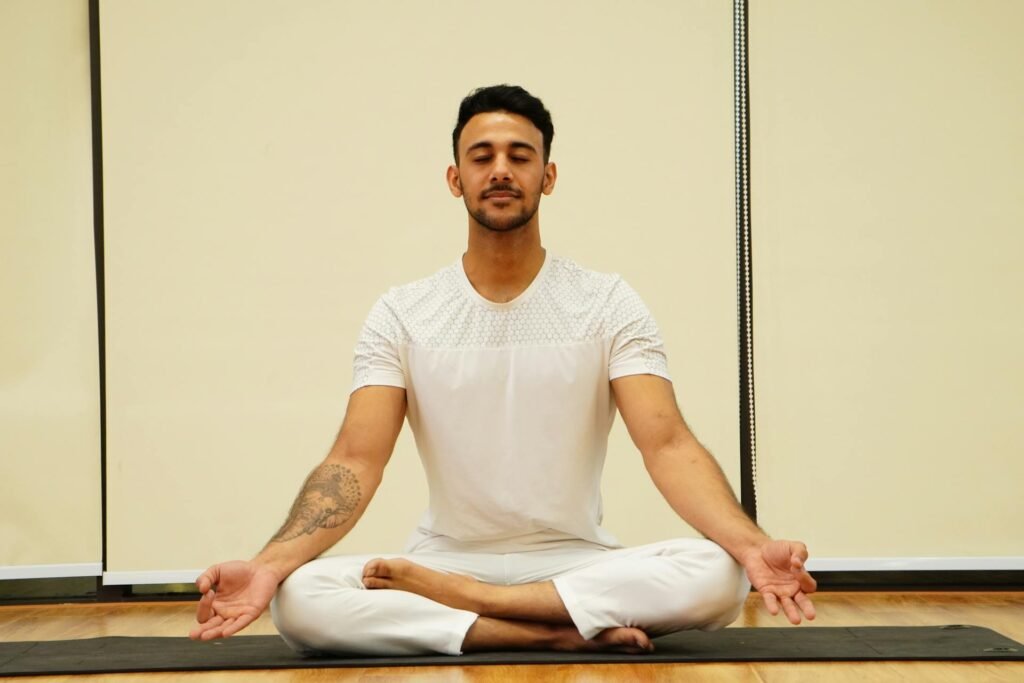Ever wonder why some ancient practices have stood the test of time? In the bustling world of modern wellness, two profound traditions from India continue to captivate seekers of holistic health: Kundalini Yoga and Ayurveda. Together, they form a fascinating dance of energy and balance that’s more relevant today than ever before.
Think of these practices as two sides of the same cosmic coin – while Kundalini Yoga awakens your dormant spiritual energy through dynamic movements and breath work, Ayurveda provides the foundation for sustaining that awakening through practical, everyday wisdom. It’s like having both the key to unlock your potential and the manual to maintain it.
Fundamental Concepts of Kundalini Yoga and Ayurveda
Born in ancient India, Kundalini Yoga Journey centers on awakening spiritual energy at the spine’s base. This practice combines poses, breathing, and mantras to raise consciousness through the body’s energy centers.
Ayurveda, dating back over 3,000 years, means “science of life” in Sanskrit. It works with three bio-energies – Vata, Pitta, and Kapha – to create balance in body and mind through diet, herbs, and lifestyle practices.
Both methods see humans as multi-layered beings, linking physical health with spiritual growth.

The Complementary Nature of Kundalini and Ayurveda
When practiced together, Kundalini yoga and Ayurveda create a well-rounded path to wellness. While Kundalini techniques channel energy through your subtle body, Ayurvedic guidelines support physical health through diet and daily routines.
These practices connect through shared elements like breath work, which both activates kundalini energy and keeps your doshas in check. You’ll find synergy of Ayurveda and seasonal adjustments, dietary wisdom, and daily practices that maintain stable energy while supporting your spiritual growth.
Both systems put managing energy at the heart of health, working with life force in different but compatible ways.
Understanding Energy Systems in Both Traditions
Let’s look at how Kundalini yoga works with seven main chakras – energy centers that run along your spine. Three key channels carry this energy: Ida (cooling), Pingala (warming), and Sushumna (central). The energy starts at your spine’s base, moving up through each chakra.
In Ayurveda, your health comes from balancing three energy types: Vata (movement), Pitta (heat), and Kapha (structure). These energies match up with specific chakras – for example, your root and sacral chakras connect with grounding Kapha energy, while your throat and crown chakras link to flowing Vata energy.
Understanding both systems helps you find balance – like doing grounding exercises when you need to calm both Vata and your root chakra.

Breath Work (Pranayama) in Both Traditions
Kundalini yoga features powerful breathing methods like long, deep breaths to quiet your nervous system, and Daily Pranayama exercises like Breath of Fire – quick belly breathing that builds energy. You’ll also find alternate nostril breathing to balance your left and right energy channels, and cooling Sitali breath through a curled tongue.
Each breathing style affects your body’s energies differently. Cooling breaths help with fiery Pitta, warming practices support sluggish Kapha, and calming techniques settle restless Vata. When you match these methods to the seasons and your needs, you create natural harmony.
Sound Healing and Mantras
Sound sits at the heart of Kundalini Yoga Journey, with mantras like “Ong Namo Guru Dev Namo” connecting you to ancient teachings, and “Sat Nam” reminding you of your true self. These sounds shake loose old patterns and open your chakras.
In Ayurvedic practice, different sounds match your body’s needs – soft tones calm Vata, smooth melodies cool Pitta, while lively rhythms wake up Kapha. Try “Lam” for your root chakra and Kapha balance, “Ram” to spark your solar plexus and level Pitta, or “Ham” to clear your throat and steady Vata.
Meditation Techniques from Both Traditions
In Kundalini yoga, you’ll find yourself focusing on specific chakras, picturing energy moving up your spine, and using hand positions (mudras) with mantras. These methods aim to restore your energetic balance and open your awareness.
Ayurvedic meditation brings balance to your body type – steady gazing for Vata, nature connection for Pitta, and movement-based practice for Kapha. You might start your day with kundalini practice matched to your body type, take a midday pause to balance seasonal effects, and wind down with calming evening meditation.

Mental and Emotional Balance
Kundalini yoga offers quick relief from stress through left nostril breathing and heart-centered meditation. These gentle techniques help balance your glands and calm your nerves naturally. Think of specific hand positions that shift your brain patterns and steady your emotions.
Ayurveda brings comfort through herbs like ashwagandha and brahmi, daily oil massage to quiet nervous tension, and simple food choices that keep your mind clear. When you blend both paths, you might pick Synergy of Ayurveda based on your body type, add supporting herbs, and adjust your meals to keep your mood steady and your energy flowing smoothly.
Spiritual Development Through Combined Practices
When you practice both Kundalini Yoga Journey and Ayurveda, you get a well-rounded path to spiritual growth. Ayurveda readies your body for higher energy, while Kundalini gives you tools to channel it. Together, they help you build a strong foundation for lasting spiritual progress.
Both paths show how awareness grows – Kundalini through rising energy in your chakras, Ayurveda through the shift from dull to active to peaceful states of mind. Following both lets you understand your natural patterns and tackle spiritual blocks head-on.
To make it stick, start with knowing your body type, change your practice with the seasons, and pick Kundalini methods that match your spiritual goals.
The Path Forward: Integrating Kundalini and Ayurveda
The beauty of combining Kundalini Yoga and Ayurveda lies in their natural synergy – like two ancient rivers merging to form a powerful stream of wellness. These time-tested practices offer more than just physical health; they provide a comprehensive roadmap for living in harmony with both your inner nature and the world around you.
As you begin to weave these practices into your daily life, remember that it’s not about perfection but progression. Start small, stay consistent, and watch as these ancient wisdom traditions transform your modern life in profound and practical ways.
